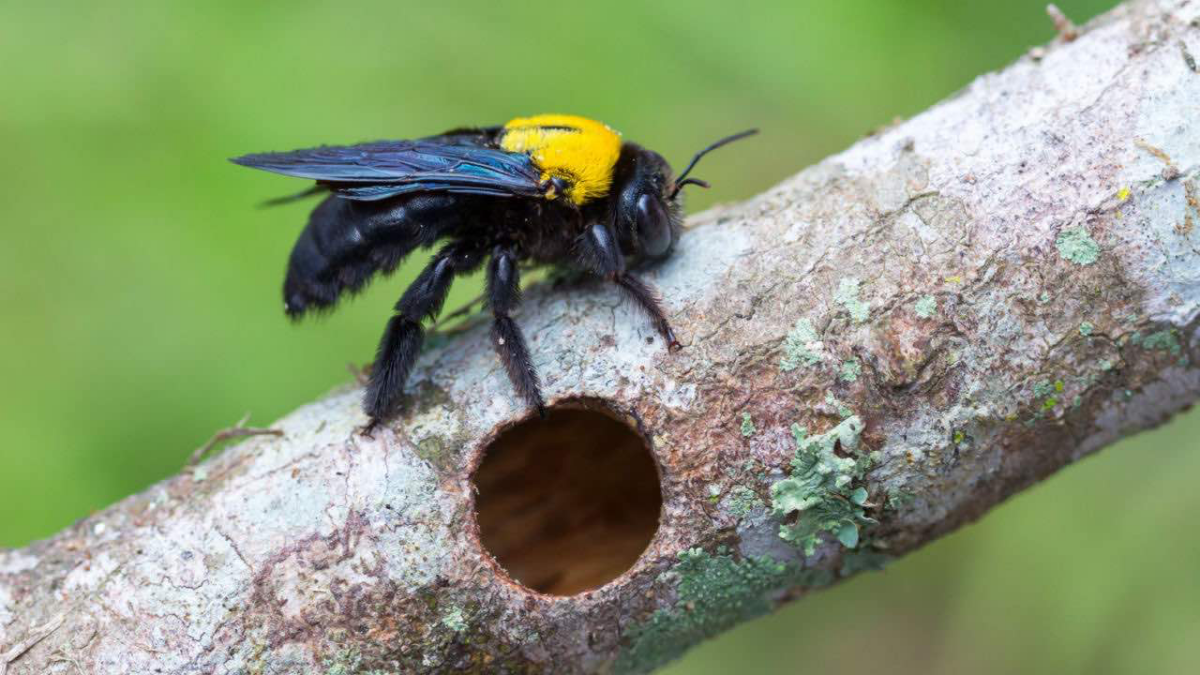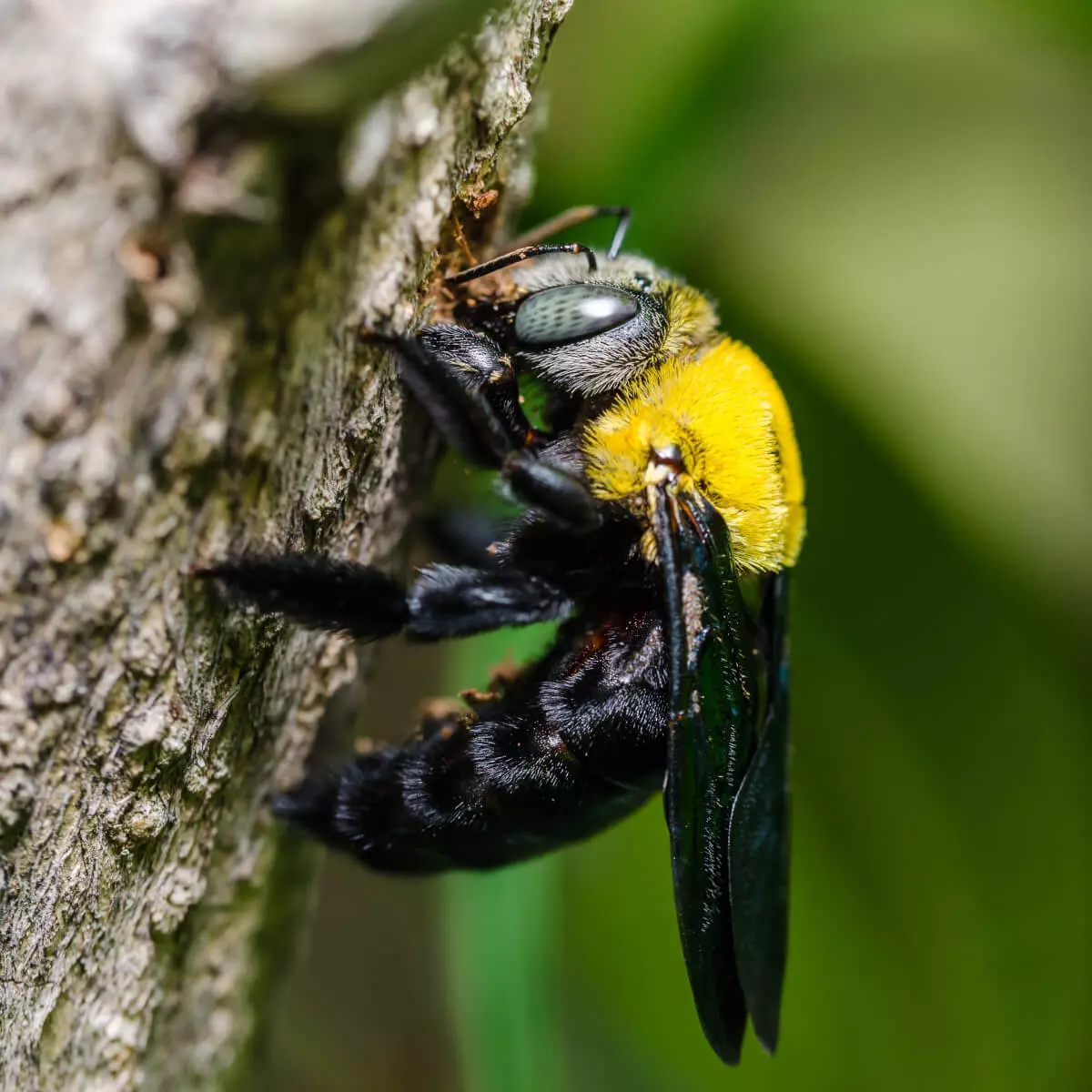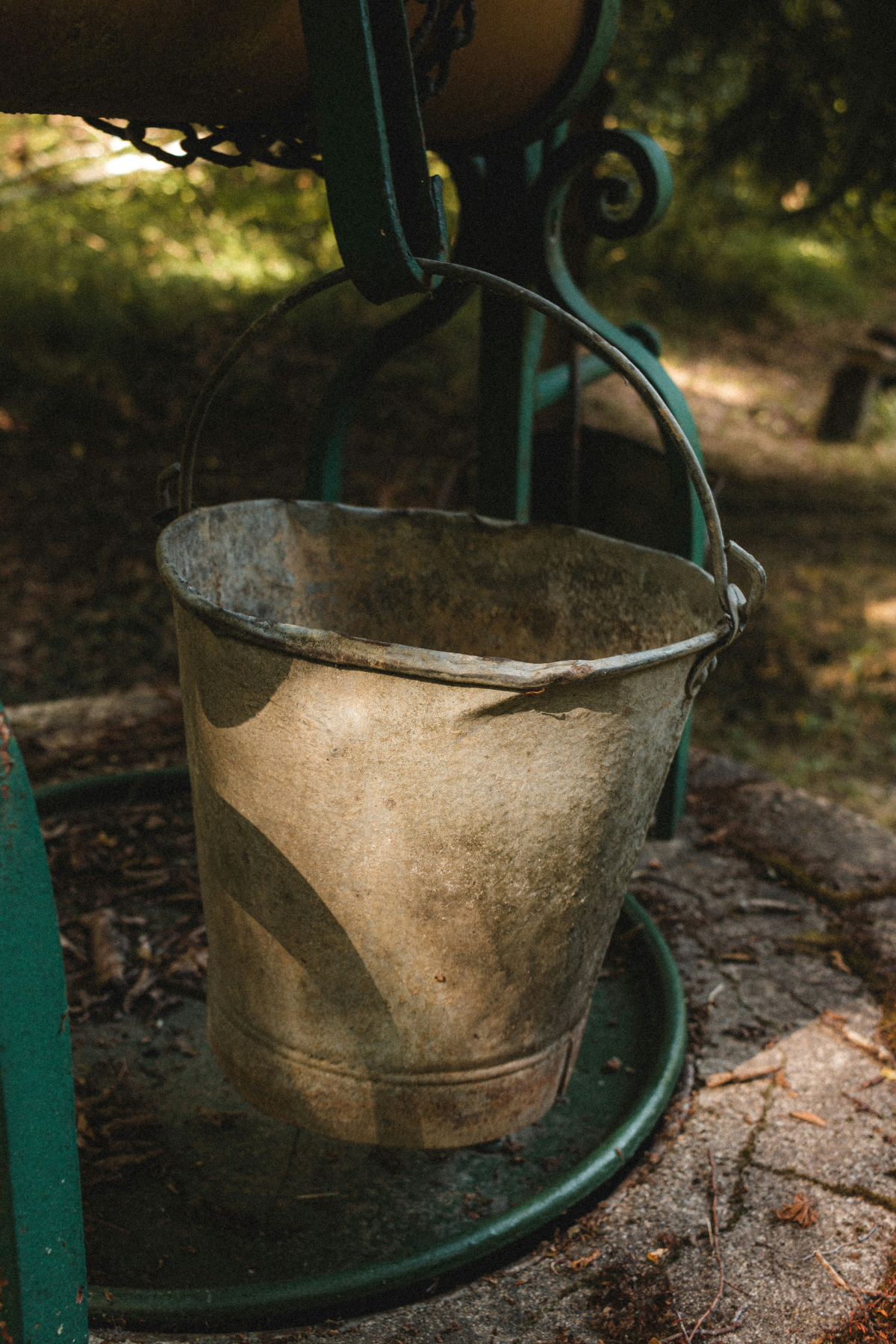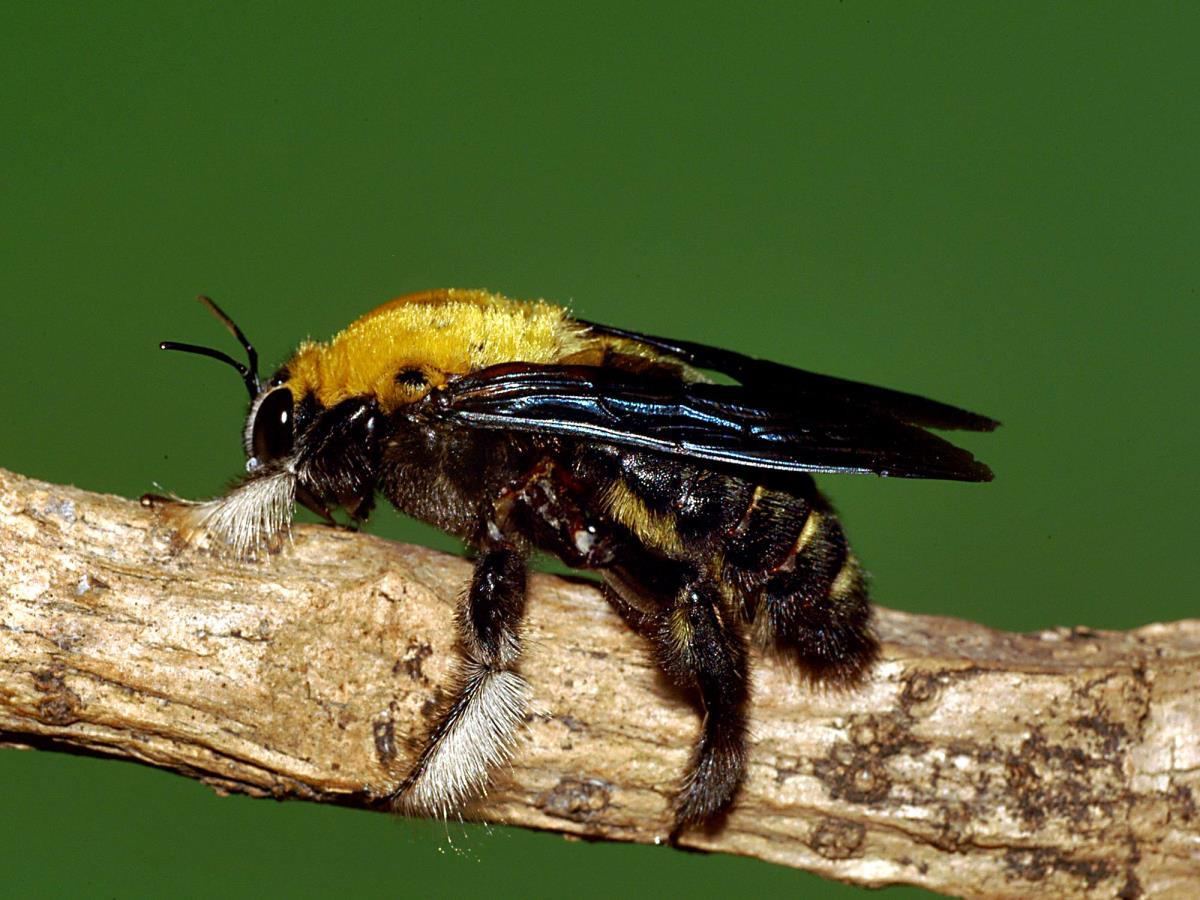Here Is How To Make 6 Effective Carpenter Bee Traps
As the warmth of spring ushers in a new season of growth and vitality, our gardens begin to teem with life. Among the myriad of garden visitors, the carpenter bee makes its grand entrance. Often misunderstood, these bees play a crucial role in the pollination process, yet they pose a unique challenge for homeowners. Especially for those with cherished wooden structures. As they buzz about, these bees are not just seeking nectar. They’re also on the lookout for the perfect spot to burrow and lay their eggs. This is often at the expense of our decks, eaves, and garden sheds. […]

As the warmth of spring ushers in a new season of growth and vitality, our gardens begin to teem with life. Among the myriad of garden visitors, the carpenter bee makes its grand entrance. Often misunderstood, these bees play a crucial role in the pollination process, yet they pose a unique challenge for homeowners. Especially for those with cherished wooden structures. As they buzz about, these bees are not just seeking nectar. They’re also on the lookout for the perfect spot to burrow and lay their eggs. This is often at the expense of our decks, eaves, and garden sheds. Understanding the behavior of carpenter bees and learning effective management strategies is key to maintaining the balance between enjoying their pollinating benefits and protecting our homes. That’s why today we want to share with you some effective carpenter bee traps you can use to keep them at bay.
These bees play a crucial role in the pollination process

What Are Carpenter Bees?
Carpenter bees are robust and solitary creatures. They are an intriguing species that is distinguished by their impressive wood-boring ability. Resembling their bumblebee cousins, they sport a glossy black abdomen and can often be seen skillfully maneuvering around household woodwork. Unlike the communal honeybee, carpenter bees prefer a solitary existence. Each female bee industriously chisels out tunnels in wood structures to lay her eggs. A process that, over time, can lead to significant structural damage. These bees, while not typically aggressive, are often considered pests due to their destructive nesting habits. However, their role in pollination cannot be understated, as they contribute significantly to the health and diversity of our gardens and ecosystems.
Carpenter bees are robust and solitary creatures

Carpenter Bee Traps
The task of trapping carpenter bees is an important measure to protect our wooden structures. However, it is also a step towards a more sustainable and environmentally conscious approach to pest control. These industrious bees are famous for their loyalty to their nesting sites. They often return to the same wooden nooks year after year, expanding their tunnels and thereby weakening the wood. Utilizing traps is a non-toxic solution that effectively mitigates this damage while avoiding the harmful effects of chemical pesticides. Moreover, trapping helps preserve the carpenter bee population, which is essential for a thriving ecosystem. By adopting this method, homeowners can strike a delicate balance between safeguarding their homes and contributing to environmental conservation.
Utilizing traps is a non-toxic solution that effectively mitigates the damage they cause

Simple wooden box
Creating a wooden box trap for carpenter bees is a practical and effective solution. Start by constructing a small wooden box, approximately 6 inches in length and width, with an open bottom for easy access. Along the sides of the box, drill small holes about ½ inch in diameter – these will serve as entry points for the bees. Inside the box, securely place a glass jar or a metal can with a removable lid. The idea is for the bees to enter the box through the holes, get attracted to the jar or can, and then get trapped inside it. Hang or mount the trap near known carpenter bee hotspots, such as under eaves or near decks. Check and empty the trap regularly to maintain its effectiveness.
Creating a wooden box trap for carpenter bees is a practical and effective solution
Plastic bottle
The plastic bottle trap is a simple yet ingenious way to capture carpenter bees. Take a standard plastic bottle and cut off the top about one-third of the way down. Invert the top and place it back into the bottle like a funnel and secure it with tape or glue. To attract the bees, add a sweet attractant – a mixture of sugar water works well – at the bottom of the bottle. The bees will be drawn into the bottle through the funnel but will find it difficult to escape. Place these traps around your garden or near wooden structures where bees are frequently seen. The transparency of the bottle also allows for easy monitoring of the trap’s success.
The plastic bottle trap is a simple yet ingenious way to capture carpenter bees

Mason jar
A Mason jar trap combines functionality with a touch of charm. First, find a wooden lid or a piece of wood that can cover the mouth of the jar. Drill several holes, each about ½ inch in diameter, into the wooden lid. These holes should be large enough for the bees to enter. Attach the lid securely to the Mason jar. You can add an attractant, like sugar water, inside the jar to lure the bees in. Once the bees enter the jar through the holes in the lid, they’ll be unable to find their way out. This trap can be hung from branches or placed on flat surfaces near areas of bee activity.
A Mason jar trap combines functionality with a touch of charm

PVC pipe
For a more durable trap, especially in areas with high carpenter bee activity, consider constructing a PVC pipe trap. Take a length of PVC pipe, about 10-12 inches long and 3-4 inches in diameter. Drill several ½ inch holes along the length of the pipe to serve as entry points. One end of the pipe should be sealed, while the other end is attached to a collection container, such as a small plastic bottle or jar, where the bees will be trapped. The collection container should be easily detachable for regular emptying. Hang or mount the trap near the affected areas. The sturdy nature of PVC makes this trap ideal for long-term use.
Take a length of PVC pipe

Hanging bait
A hanging bait trap is an excellent method for capturing carpenter bees in areas they frequently visit. Begin with a solid wooden block, about 4-6 inches in length, and drill several ½ inch holes on each side, ensuring they are deep enough for the bees to enter. Inside these holes, place an enticing bait such as a mix of sugar water or honey to lure the bees. The sweet scent will attract the bees into the holes where they will become trapped. Hang this trap from a tree branch or near wooden structures where bee activity is high. Check and clear the trap regularly, replacing the bait as needed to maintain its allure.
The sweet scent will attract the bees into the holes

Bucket trap
The bucket trap is ideal for tackling larger carpenter bee infestations. Start with a large bucket, preferably 5 gallons in size, and drill numerous ½ inch holes around its upper sides. These holes should be large enough for the bees to enter but not so big that they can easily escape. Fill the bottom of the bucket with a sweet liquid attractant, such as a mixture of sugar water, to draw the bees in. You can also add a few drops of dish soap to break the surface tension, ensuring that bees that enter the liquid cannot escape. Hang or place the bucket near areas where bee activity is noticeable. Regularly check and empty the bucket to dispose of trapped bees and refresh the bait.
The bucket trap is ideal for tackling larger carpenter bee infestations

Controlling carpenter bee populations is an integral part of home maintenance. Especially for those with wooden structures. By implementing these homemade carpenter bee traps, you can protect your home in an environmentally conscious manner. Remember, while carpenter bees can be a nuisance, they also play a crucial role in our ecosystem, so it’s important to manage them responsibly and humanely.
You can protect your home with these homemade carpenter bee traps

